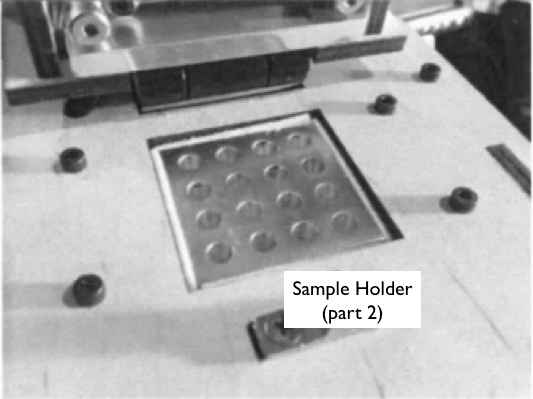BME100 f2013:W1200 Group12 L4: Difference between revisions
| Line 14: | Line 14: | ||
{| style="wikitable" width="700px" | {| style="wikitable" width="700px" | ||
|- valign="top" | |- valign="top" | ||
| [[Image: | | [[Image:picture000.jpg|100px|thumb|Name: Brandon Bartels Role(s):Worked on Initial Machine Testing]] | ||
| [[Image:BME103student.jpg|100px|thumb|Name: Antonio Moran Role(s):]] | | [[Image:BME103student.jpg|100px|thumb|Name: Antonio Moran Role(s):]] | ||
| [[Image:BME103student.jpg|100px|thumb|Name: Kevin Lam Role(s)]] | | [[Image:BME103student.jpg|100px|thumb|Name: Kevin Lam Role(s)]] | ||
Revision as of 17:16, 28 October 2013
| Home People Lab Write-Up 1 | Lab Write-Up 2 | Lab Write-Up 3 Lab Write-Up 4 | Lab Write-Up 5 | Lab Write-Up 6 Course Logistics For Instructors Photos Wiki Editing Help | |||||||||
|
OUR TEAMLAB 1 WRITE-UPInitial Machine TestingThe Original Design An Open PCR is a machine that will duplicate a desired stand of DNA. The process of making billions of copies is called amplification. How an Experimenting With the Connections
When we unplugged the white wire that connects (part 6) to (part 2), the machine's display stopped reading the temperature of the machine. That leads us to believe that part six is the machines thermometer. Part 1 in the above picture is a heating plate and lid which is used to maintain a greater temperature at the top of the test tubes which prevents the DNA samples from evaporating and rising to the top. Part number 2 is the test tube sample holder which is needed to hold the DNA samples as they are heated and cooled throughout the experiment.
The Open PCR machine was tested on October 23, 2013. We performed a simple test with the machine connected to a computer in order to see if the machine properly went through all of its cycles. The conditions the test was run under were to heat the heating lid to 100°C , with an initial step of 95°C for 3 minutes. We ran 35 cycles for the step, and denatured the faux test samples at 95°C for 30 seconds, then annealed the samples at 57°C for 30 seconds. The extend was set to 72°C for a 30 second duration, and the final step was 72°C for 3 minutes. Finally, the final hold was set to 4°C .The Open PCR functioned properly and completed its cycles without any issues. The overall experience was good, although some of the cycles took a long time, which was expected.
ProtocolsThermal Cycler Program
PCR - The Underlying Technology(Add a write-up, essay-style, organized into paragrpahs with descriptive headers, based on the Q&A's from Section three of your worksheet)
Template DNA At the beginning of the reaction high temperature is applied to the original DNA molecule to separate the strands from each other. The template DNA is the sample DNA that contains the beginning sequence to which the reactions will be derived from. Taq Polymerase Taq polymerase is the most common polymerase used in synthesizing new strands of DNA. Taq DNA has a higher fidelity when the DNA is copied. Polymerases use DNA templates and primers to generate new strands of DNA that are heat resistant. Magnesium Chloride (MgCl¬2) Magnesium Chloride acts as a catalyst in the reaction because the Thermo stable polymerase requires the presence of magnesium to act as a cofactor throughout the reaction process. Because of this Magnesium chloride is the preferred method of adding magnesium to the PCR. Deoxyribonucleotides (dNTP’s) dNTP’s are the building blocks of new DNA strands. dNTP’s are the single units of the bases A,T,G, and C. |
|||||||||






